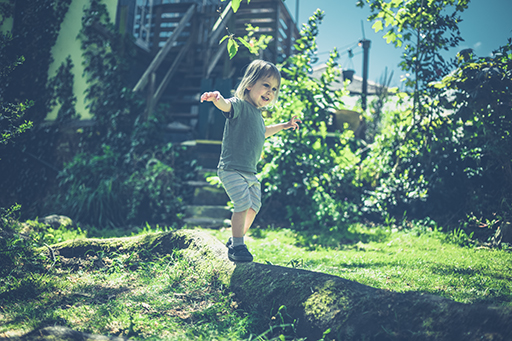2.5 Vestibular sense – a sense of balance
The vestibular sense is responsible for your balance. Essentially, it is your awareness of the position and motion of your head and body. The vestibular system includes receptors in the inner ear, and it works alongside other sensory systems, particularly vision.
The vestibular sense is like a gyroscope for the body, enabling you to know whether you are upright or upside down. It also helps you to perceive your direction and speed of travel.

A well-developed vestibular sense is crucial for a child’s all-round learning and development. Babies and children need a wide variety of opportunities to stimulate and develop their vestibular sense. This includes movements such as rocking, spinning, twisting, turning, jumping, bouncing, tipping, wobbling, falling and moving at different speeds.
Play gives babies and children lots of opportunities to gain these experiences and in Week 5 you will look at the relationship between play and physical development in detail.
